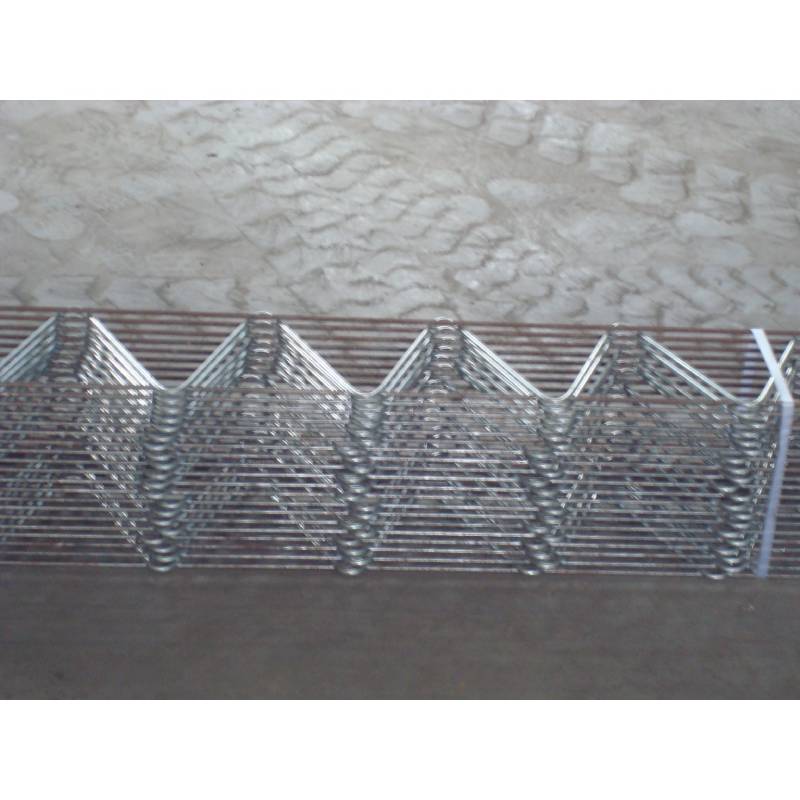
- Mobile Phone
- +8613931874955
- sales@cntcmetal.com
Durable Stainless Steel Brick Ties for Secure and Long-lasting Masonry Applications
Stainless Steel Brick Ties Enhancing Structural Integrity and Durability
In the realm of construction, durability and strength are paramount. One of the components that significantly contribute to these factors is the brick tie, a small but vital connector that plays a crucial role in the stability of masonry structures. Among various types of brick ties available, stainless steel brick ties are gaining immense popularity due to their durability, corrosion resistance, and longevity.
At its core, a brick tie serves to anchor brickwork to a supporting structure, which can be made of concrete, steel, or wood. This connection is essential for ensuring that the brick facade remains secure and can withstand the elements, including wind and seismic activities. Stainless steel brick ties are designed to provide these benefits while offering additional advantages over traditional materials such as galvanized steel or plastic.
One of the primary advantages of stainless steel brick ties is their exceptional resistance to corrosion. In environments where moisture levels are high, such as coastal areas or regions with heavy rainfall, traditional steel ties may corrode over time, leading to compromised structural integrity. Stainless steel, on the other hand, contains chromium, which forms a passive layer of oxide on its surface. This layer protects the underlying metal from rust and corrosion, ensuring that the brick ties maintain their strength and durability throughout their lifespan.
Moreover, stainless steel brick ties can withstand a wide range of temperatures, making them suitable for various climates
. They can perform effectively in both hot and cold environments without experiencing significant degradation. This quality is especially important in regions with extreme weather conditions, where fluctuations in temperature can stress other materials and lead to structural failures.stainless steel brick ties

Another notable feature of stainless steel brick ties is their versatility. They are available in various sizes and configurations to accommodate different construction needs. Whether constructing a high-rise building, a residential home, or a garden wall, the flexibility offered by stainless steel brick ties allows engineers and builders to design structures that meet specific aesthetic and functional requirements.
In addition to their practical benefits, stainless steel brick ties contribute to sustainability efforts in the construction industry. As they are highly durable and resistant to decay, they reduce the need for frequent repairs and replacements, which can lead to a significant reduction in material waste over time. With the growing emphasis on environmentally friendly building practices, the use of stainless steel brick ties aligns with the trend towards sustainable construction.
Another factor that emphasizes the importance of stainless steel brick ties is safety. In areas subjected to violent weather events, such as hurricanes or earthquakes, the structural integrity of buildings becomes paramount. Stainless steel ties bolster the resilience of masonry against such forces, ensuring that structures remain safe for occupants.
In summary, stainless steel brick ties represent a critical innovation in construction materials. Their resistance to corrosion, temperature fluctuations, and durability position them as a superior choice for ensuring the longevity and stability of masonry structures. Coupled with their versatility and contribution to sustainability, stainless steel brick ties not only enhance the structural integrity of buildings but also reflect a commitment to modern, responsible construction practices. As the industry continues to evolve, the adoption of stainless steel brick ties will likely become a common standard, setting the benchmark for quality in masonry construction.
share:
-
Your Source for Concrete Wall Ties and Masonry AccessoriesNewsJul.10,2025
-
Unlocking the Power of Iron Wire for Every ProjectNewsJul.10,2025
-
Explore Advanced Chain Wire and Stainless Steel Mesh FencingNewsJul.10,2025
-
Discover the Benefits of Annealed Wire ProductsNewsJul.10,2025
-
Discover China Stainless Steel Wire Mesh SolutionsNewsJul.10,2025
-
Build with Confidence Using High-Performance Masonry AccessoriesNewsJul.10,2025
-
Why Sacrificial Formwork Is Redefining Underground ConstructionNewsJun.06,2025



















